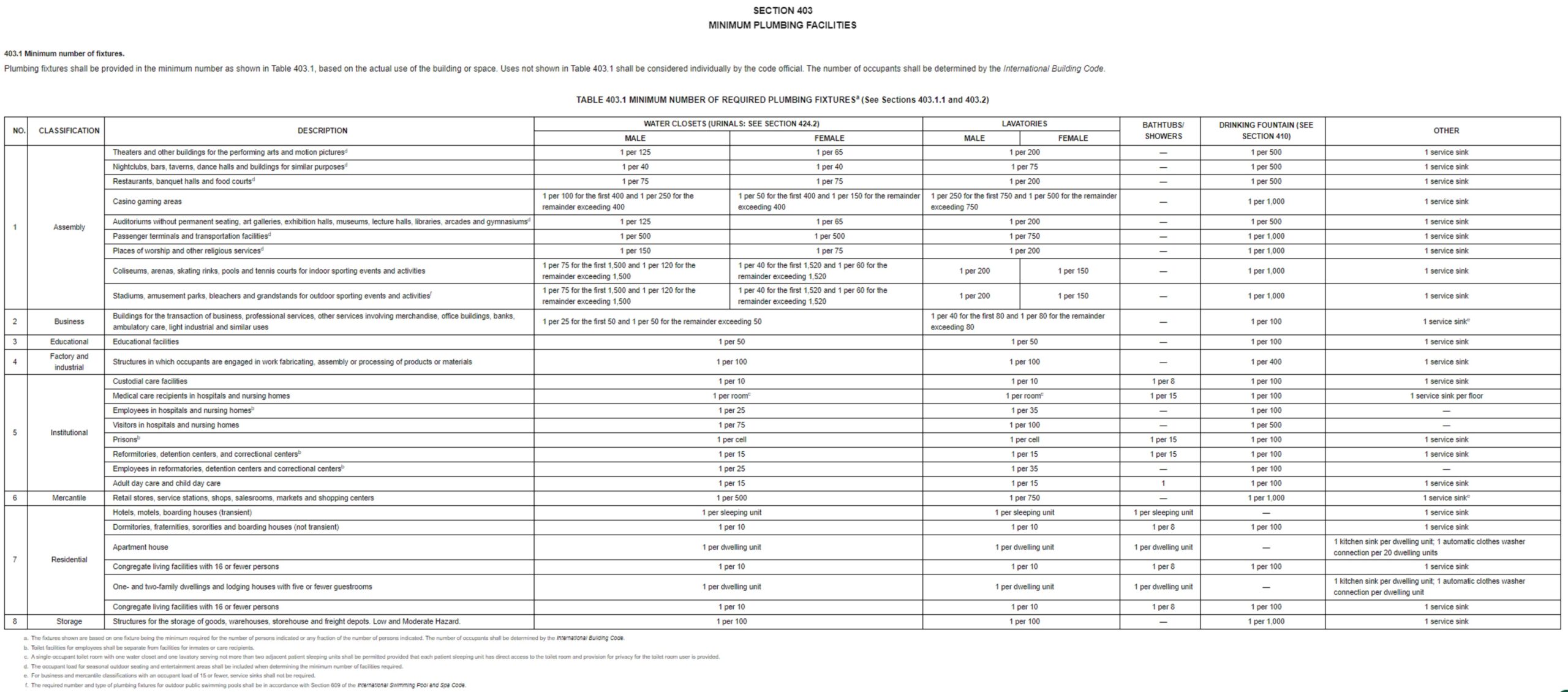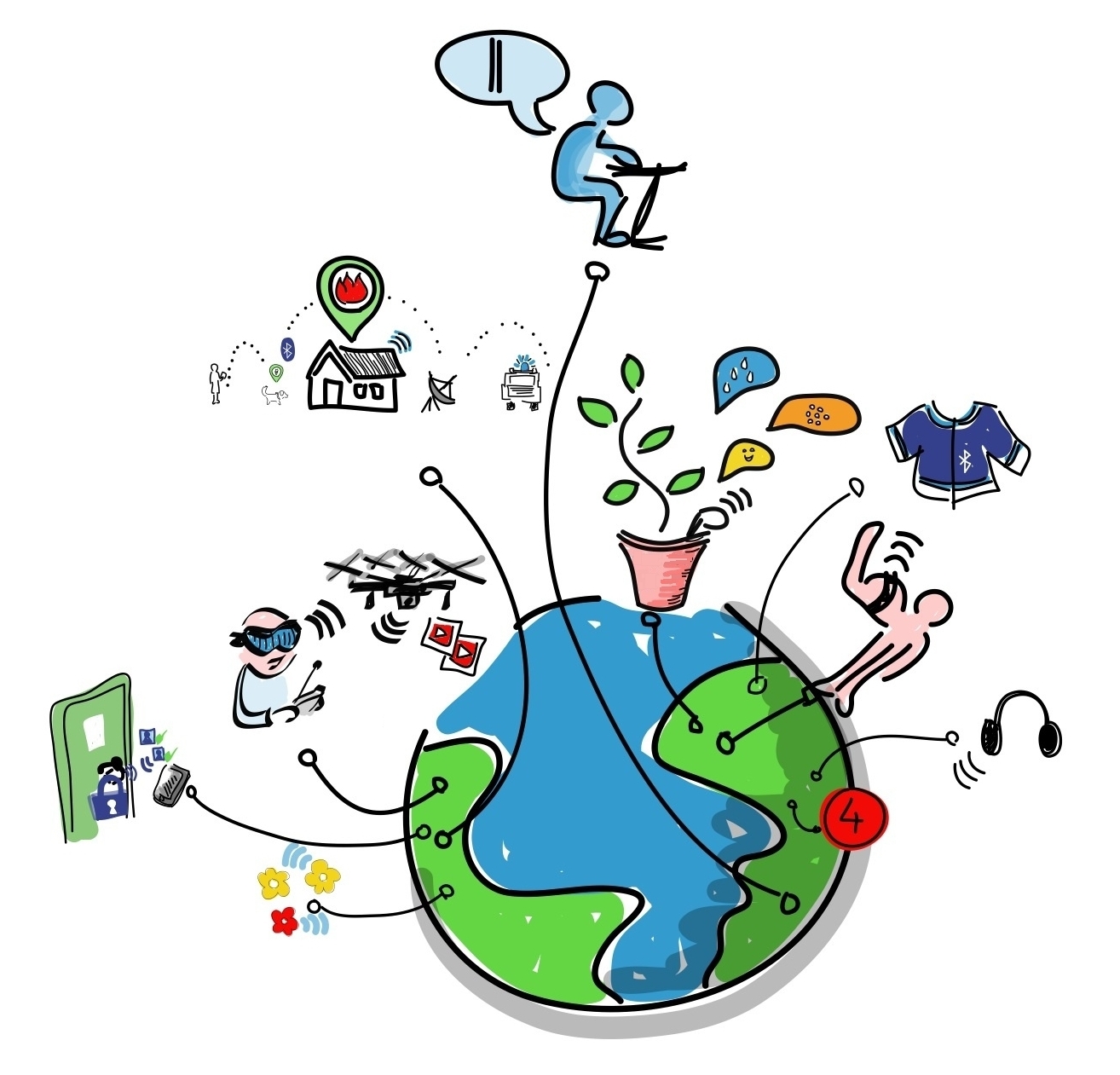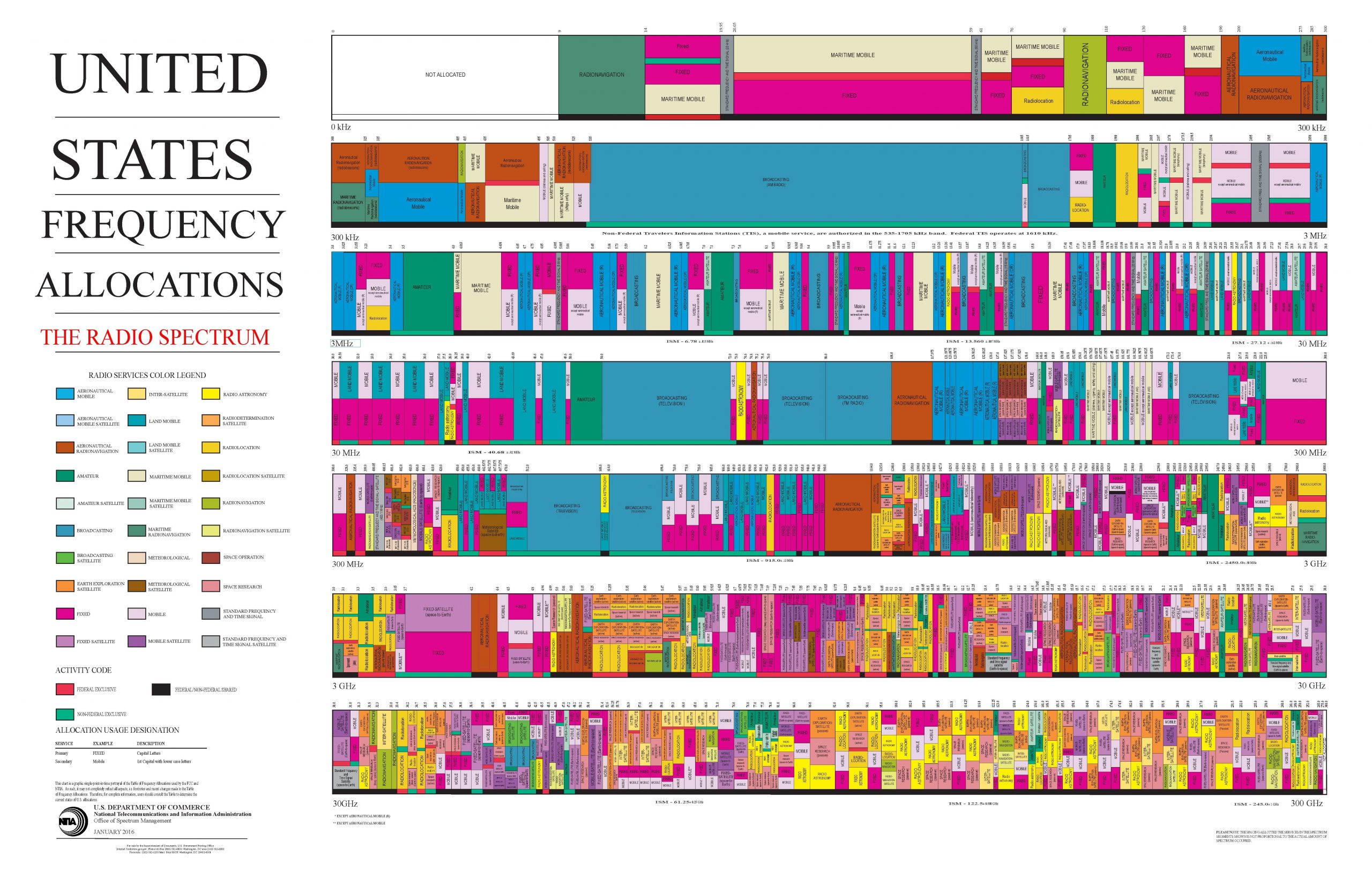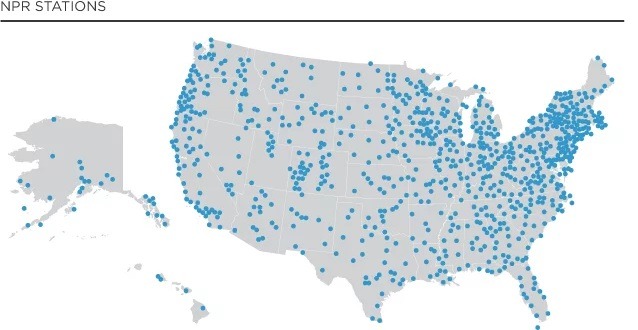Author Archives: mike@standardsmichigan.com
- Home
- Articles posted by mike@standardsmichigan.com (Page 39)

“The Life of Julia”
This content is accessible to paid subscribers. To view it please enter your password below or send mike@standardsmichigan.com a request for subscription details.
Morning Shower (And All That)
Complete Monograph: 2024 GROUP A PROPOSED CHANGES TO THE I-CODES
Design Considerations for Hot Water Plumbing
Baseline Standards for Student Housing
2024/2025/2026 ICC CODE DEVELOPMENT SCHEDULE
Indoor plumbing has a long history, but it became widely available in the 19th and early 20th centuries. In the United States, for example, the first indoor plumbing system was installed in the Governor’s Palace in Williamsburg, Virginia in the early 18th century. However, it was not until the mid-19th century that indoor plumbing became more common in middle-class homes.
One important milestone was the development of cast iron pipes in the 19th century, which made it easier to transport water and waste throughout a building. The introduction of the flush toilet in the mid-19th century also played a significant role in making indoor plumbing more practical and sanitary.
By the early 20th century, indoor plumbing had become a standard feature in most middle-class homes in the United States and other developed countries. However, it was still not widely available in rural areas and poorer urban neighborhoods until much later.
Kavárna u Rotlevů
“Bureaucracy is the death of any achievement”
ISO: National Standards of the Czech Republic
UNMZ Czech Office for Standards, Metrology, and Testing
🎽 What do our students Eliška Martínková and Eduard Kubelík compete in?
🎥 They will tell you in our reel. pic.twitter.com/Tev5jZ6Vn1
— Charles University (@CharlesUniPRG) August 10, 2024
Bach Brandenburg Concerto III
Still buzzing from yesterday’s keg tapping! 🎉 Our EWU Craft Beer Industry students teamed up with @NoLiBrewhouse to release “188.2 Imperial Red Ale,” celebrating EWU’s 1882 founding.
Go taste this student-brewed excellence! 🍻#EWUCraftBeer #NoLi #StudentBrewed #1882RedAle pic.twitter.com/bNk8Z2ztva— EWU (@EWUEagles) June 3, 2025
Radio Spectrum for the Internet of Things
“Wireless Telegraphy” 1899|Guglielmo Marconi
Derek T. Otermat – Ivica Kostanic – Carlos E. Otero
Electrical and Computer Engineering Department, Florida Institute of Technology
Abstract. The analysis presented in this paper indicates that the FM radio spectrum is underutilized in the areas of the continental United States that have a population of 100000 or less. These locations have vacant FM radio spectrum of at least 13 MHz with sufficient spectrum spacing between adjacent FM radio channels. The spectrum spacing provides the required bandwidth for data transmission and provides enough bandwidth to minimize interference introduced by neighboring predicted and unpredicted FM radio stations and other low-power short-range Internet of Thing (IoT) devices. To ensure that low-power short-range IoT devices maintain reliable communications vacant radio spectrum, such as the FM radio spectrum in these areas, will need to be used through cognitive radio.
CLICK HERE to order complete paper.
Related:
Northwestern University: Internet of Things and Edge Computing
Falsus in uno, Falsus in omnibus
To what degree does the endless and, frankly shameless, on-air fundraising by an organization with widely tolerated bias constitute de facto political fundraising for the Democratic Party? In Southeastern Michigan — in less than a 50 mile region — you can hear the same NPR “content” from six different universities: Ann Arbor, Ypsilanti, Toledo, Detroit, East Lansing, and Flint.
There has been some relatively recent legislative proposals to restore NPR to its original charter of cultural content (music, book reviews, agricultural information, etc.) but these proposals never moved beyond the relevant committee.
NPR literally said “Federal funding is essential to public radio” on their own website (now taken down).
What hypocrites! pic.twitter.com/kYAXW0zpyl
— Elon Musk (@elonmusk) April 12, 2023

NPR CEO Katherine Maher was a no-show at the House Oversight Subcommittee Hearing
Related:
This is a clear and blatant effort to evade the FCC’s Equal Time rule.
The purpose of the rule is to avoid exactly this type of biased and partisan conduct – a licensed broadcaster using the public airwaves to exert its influence for one candidate on the eve of an election.… https://t.co/LliZF0po9t
— Brendan Carr (@BrendanCarrFCC) November 3, 2024
National Public Radio Inc | 2022 Tax Filing
National Public Radio | IRS 990 Return of Organization Exempt from Income Tax
American Public Media Group | 2022 Tax Filing
“Hotseat heats up for NPR CEO Katherine Maher — and her life is the ultimate woke-elite bingo card”
National Public Radio follows guidelines and best practices when conducting fundraising campaigns, but they’re not so much strict “rules” as they are principles and standards upheld by NPR and its member stations. Here are some common practices and considerations:
- Transparency: NPR and its member stations are typically transparent about their funding needs and where the money goes. They often provide detailed breakdowns of their budgets and expenses.
- Ethical Solicitation: Fundraising efforts should be conducted ethically and in accordance with NPR’s values. This means avoiding misleading tactics and being honest about the need for funding.
- Listener Support: NPR often emphasizes the importance of listener support in funding their programming. They encourage individuals to contribute at various levels, often with incentives like member benefits.
- Corporate Sponsorship: NPR also receives funding from corporate sponsors, “but they are careful to maintain editorial independence.” Sponsored content is clearly labeled, and NPR maintains strict guidelines to ensure that sponsors do not influence editorial decisions.
- Member Stations: NPR member stations across the country conduct their own fundraising campaigns, often in conjunction with national NPR campaigns. These stations rely heavily on listener support and may have their own guidelines and practices.
- Regulatory Compliance: NPR and its member stations must comply with relevant laws and regulations governing fundraising, including those related to nonprofit organizations and broadcasting.
- Stewardship: NPR and its member stations typically prioritize stewardship of donor funds, ensuring that donations are used effectively and efficiently to support their mission and programming.
While there may not be hard and fast rules for NPR fundraising, adherence to these principles helps maintain trust with listeners and supporters.
My resignation letter to NPR CEO @krmaher pic.twitter.com/0hafVbcZAK
— Uri Berliner (@uberliner) April 17, 2024
To become a National Public Radio (NPR) member station or broadcaster, certain criteria must be met. NPR is a mission-driven organization that partners with independently owned and operated public radio stations across the United States to deliver its programming. Here are the typical criteria for becoming an NPR member station:
- Nonprofit Status: NPR member stations must be nonprofit organizations, often affiliated with universities, community organizations, or governmental bodies.
- Broadcast License: Stations must hold a valid broadcast license issued by the Federal Communications Commission (FCC) in the United States. This license authorizes the station to broadcast on a specific frequency within a designated geographic area.
- Commitment to NPR’s Mission: Member stations are expected to share NPR’s mission of providing high-quality, non-commercial programming that serves the public interest. This includes delivering news, cultural content, and educational programming to their local communities.
- Financial Stability: Stations must demonstrate financial stability and viability to ensure they can fulfill their commitments to NPR and their local communities over the long term.
- Technical Requirements: Stations must meet certain technical requirements to ensure they can receive and broadcast NPR programming effectively. This includes having appropriate transmission equipment and meeting FCC regulations for broadcast quality and coverage.
- Membership Dues: Member stations are required to pay annual membership dues to NPR, which help support NPR’s operations and programming.
- Compliance with NPR Policies: Stations must adhere to NPR’s policies and guidelines regarding programming standards, ethics, and editorial independence.
- Community Engagement: NPR values stations that are actively engaged with their local communities, including through outreach, events, and partnerships with local organizations.
- Programming Commitment: Member stations are expected to broadcast a significant portion of NPR programming, including flagship shows like “Morning Edition” and “All Things Considered,” as well as other NPR-produced content.
- Commitment to Diversity, Equity, and Inclusion: NPR values diversity in its member stations and encourages stations to reflect the diversity of their communities in their programming and staffing.
Overall, becoming an NPR member station involves a combination of legal, financial, technical, and cultural considerations, all aimed at supporting NPR’s mission of providing high-quality public radio programming to audiences across the United States.
A significant portion of NPR member stations are associated with universities or colleges. These stations are often operated by the educational institution’s media departments or affiliated broadcasting organizations. They serve as valuable training grounds for students studying journalism, communications, broadcasting, and related fields.
While the exact number of NPR member stations associated with universities or colleges may vary over time, it’s safe to say that a substantial portion of the network falls into this category. Many universities and colleges across the United States operate their own radio stations, and a portion of these stations choose to affiliate with NPR to access its programming and resources.
Related:
Pew Research Center: Public Broadcasting Fact Sheet
— NPR (@NPR) April 12, 2023
Urban Dictionary: Affluent White Female Liberal
NPR names Katherine Maher President and CEO
Tucker Carlson: Radicalized NPR on verge of destroying itself
Congresswoman Tenney Moves to Defund NPR
Outrageous bias in the media: NPR “National Public Radio “
National Center for Charitable Statistics
Multiple bills introduced in Congress to defund NPR https://t.co/FHUwd5nFDW via @dcexaminer
— Standards Michigan (@StandardsMich) April 24, 2024
“A half truth is a whole lie” — Yiddish proverb
National Public Radio (NPR) member stations are permitted to transmit from facilities supported by federally funded colleges or universities, as many are licensed as noncommercial educational (NCE) stations under the Federal Communications Commission (FCC). These stations, often operated by or affiliated with public colleges and universities, meet FCC requirements for NCE licenses, which allow them to broadcast educational and cultural programming without commercial advertisements.
Key Points:NCE Licensing: NPR member stations are typically licensed as NCE stations, which can be owned or operated by nonprofit entities, including public colleges and universities. These institutions often receive federal funding, and their facilities (e.g., campus buildings or transmission equipment) can be used for broadcasting.
Funding Structure: Stations affiliated with colleges or universities may receive funding from the institution, listener contributions, corporate underwriting, and federal grants via the Corporation for Public Broadcasting (CPB). Federal funding, while a small portion (e.g., ~10% of public radio revenue), is often channeled through CPB to support station operations.
Examples: Many NPR member stations, such as WBEZ (operated by Chicago Public Media but affiliated with educational institutions) or KUT (operated by the University of Texas), transmit from university-supported facilities. Approximately half of NPR’s member stations are affiliated with colleges, sometimes operating directly from campus facilities.
FCC Regulations: The FCC allows NCE stations to broadcast from such facilities as long as they adhere to noncommercial guidelines, prohibiting promotional advertisements for for-profit entities while permitting donor acknowledgments.
Impact of Federal Funding Cuts: Recent reductions in federal funding for public media, as reported in 2025, may strain these stations, particularly those reliant on university support, as budget-strapped institutions face additional financial pressures.
There are no explicit FCC restrictions preventing NPR stations from using federally funded college or university facilities, provided they comply with NCE regulations.
401 Chapel Drive, Durham, North Carolina
This content is accessible to paid subscribers. To view it please enter your password below or send mike@standardsmichigan.com a request for subscription details.
Alvin Brooks Center for Faith-Justice
This content is accessible to paid subscribers. To view it please enter your password below or send mike@standardsmichigan.com a request for subscription details.
Mechanical 330
Today’s Handout: Radon, et al (For future dedicated session)
During today’s colloquium we audit the literature that sets the standard of care for mechanical engineering design, construction operations and maintenance of campus district energy systems — typically miles (kilometers) of large underground pipes and wires that characterize a district energy system. Topically, Mechanical 400 deals with energy systems “outside” or “between” buildings; whereas Mechanical 200 deals with energy systems within an individual building envelope.
2024 International Mechanical Code
A campus district energy system is a centralized heating and cooling network that supplies thermal energy to multiple buildings within a defined area, such as a college or university campus. The system generates steam, hot water, or chilled water at a central plant, which is then distributed through an underground network of pipes to individual buildings for space heating, domestic hot water, and air conditioning. By consolidating energy production and distribution, campus district energy systems can achieve significant energy and cost savings compared to individual building systems, as well as reduce greenhouse gas emissions and improve reliability and resiliency of the energy supply.






We track standards setting in the bibliographies of the following organizations:
AHRI | Air Conditioning, Heating & Refrigeration Institute
ASHRAE | American Society of Heating & Refrigeration Engineers
ASHRAE Guideline 14: Measurement of Energy and Demand Savings
ASHRAE Guideline 22: Instrumentation for Monitoring Central Chilled Water Plant Efficiency
ASME | American Society of Mechanical Engineers
ASPE | American Association of Plumbing Engineers
ASTM | American Society for Testing & Materials
AWWA | American Water Works Association
AHRI | Air Conditioning, Heating & Refrigeration Institute
IAPMO | International Association of Plumbing and Mechanical Officials
IEC | International Electrotechnical Commission
Institute of Electric and Electronic Engineers
Research on the Implementation Path Analysis of Typical District Energy Internet
Expansion Co-Planning of Integrated Electricity-Heat-Gas Networks in District Energy Systems
Towards a Software Infrastructure for District Energy Management
IMC | International Mechanical Code
IDEA | International District Energy Association
District Energy Best Practices Handbook
District Energy Assessment Tool
IPC | International Plumbing Code
ISEA | International Safety Equipment Association
NFPA | National Fire Protection Association
SMACNA | Sheet Metal Contractors National Association
UL | Underwriters Laboratories
UpTime Institute
(All relevant OSHA Standards)
It is a large domain and virtually none of the organizations listed above deal with district energy systems outside their own (market-making) circle of influence. As best we can we try to pull together the peak priorities for the real asset managers and engineers who are responsible for these system.
* Building services engineers are responsible for the design, installation, operation and monitoring of the technical services in buildings (including mechanical, electrical and public health systems, also known as MEP or HVAC), in order to ensure the safe, comfortable and environmentally friendly operation. Building services engineers work closely with other construction professionals such as architects, structural engineers and quantity surveyors. Building services engineers influence the architectural design of building, in particular facades, in relation to energy efficiency and indoor environment, and can integrate local energy production (e.g. façade-integrated photovoltaics) or community-scale energy facilities (e.g. district heating). Building services engineers therefore play an important role in the design and operation of energy-efficient buildings (including green buildings, passive houses and zero energybuildings. uses. With buildings accounting for about a third of all carbon emissions] and over a half of the global electricity demand, building services engineers play an important role in the move to a low-carbon society, hence mitigate global warming.
More:
Practical Essay on the Stength of Cast Iron and Other Metals Thomas Tredgold (1882)
George Herman Babcock — through his patents of pumps, steam engines, and novel boiler designs with collaborator Stephen Wilcox — raised the standard for safe boiler design & operation.https://t.co/qakAw4jfCn pic.twitter.com/3rCxXHkBfM
— Standards Michigan (@StandardsMich) October 21, 2020
New update alert! The 2022 update to the Trademark Assignment Dataset is now available online. Find 1.29 million trademark assignments, involving 2.28 million unique trademark properties issued by the USPTO between March 1952 and January 2023: https://t.co/njrDAbSpwB pic.twitter.com/GkAXrHoQ9T
— USPTO (@uspto) July 13, 2023
Standards Michigan Group, LLC
2723 South State Street | Suite 150
Ann Arbor, MI 48104 USA
888-746-3670























